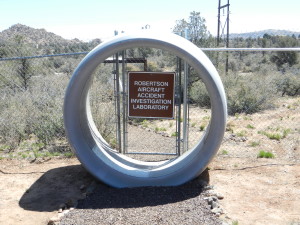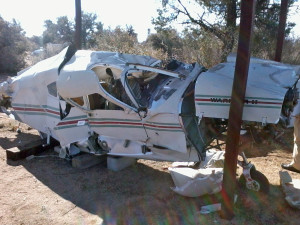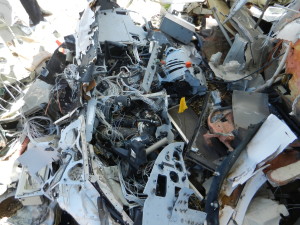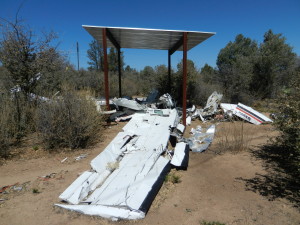Have you ever wondered how the NTSB investigates aircraft accidents? Or what happened to cause the aircraft to crash? If so, then SF 330 (Aircraft Accident Investigation) is the class for you! I just completed this class as part of my safety minor, and I am definitely glad I took this class.
Among the great knowledge that we learn throughout this course, the best part is that we get to spend time in the best Aircraft Accident Investigation lab in the nation! Led by our fearless leader Professor Waldock, SF 330 easily captures your attention and interest since day one. Professor Waldock is one of the greatest professors Embry-Riddle has. He is a prominent figure in the Aviation Safety industry and is highly respected as an aircraft accident investigator. The knowledge he shares with the class is invaluable because most of it is from his personal experiences. Time flies when in Professor Waldock’s class, as his stories bring the material to life! You should already want to take the class just to have Professor Waldock teach your class!
So what do we learn? Literally everything that you need to know about how to investigate an accident. From impact patterns to determining power settings by looking at a propeller, from fire investigation to on-scene analysis, we cover it all. We put all our knowledge from the course together for our final project in which we get assigned a real accident in our crash lab to investigate. My group was given a Cessna 208B Caravan accident to investigate. Below is a picture of the accident we had to work with (click on the picture for a larger view).
Through our investigation, we determined the aircraft departed controlled flight as it was climbing, lost airspeed, stalled and entered into a flat spin to the right that resulted in 9 fatalities. Why did it do that? I’m glad you asked! The aircraft was trying to climb above IFR conditions, but flew through moderate icing at it was climbing to 17,000′. The airframe started to accumulate ice, which resulted in the loss of airspeed sufficient to maintain a climb. Due to the loss of airspeed, the wings stalled, and the aircraft immediately entered into a spin to the right due to the high weight of the aircraft and near-aft limit of the Center of Gravity (CG) (resultant from an incorrect weight and balance that was done too fast). The pilot did not execute a proper stall/spin recovery and the aircraft impacted the ground with approximately 100+ vertical G’s and killed the pilot and 8 occupants.
There is more information I could write, but for the sake of reading, that is all I will put about the crash. If you want more detailed info, either leave me a message, or take SF 330 (Aircraft Accident Investigation) when you come to Embry-Riddle! Trust me, you will not regret your decision!







